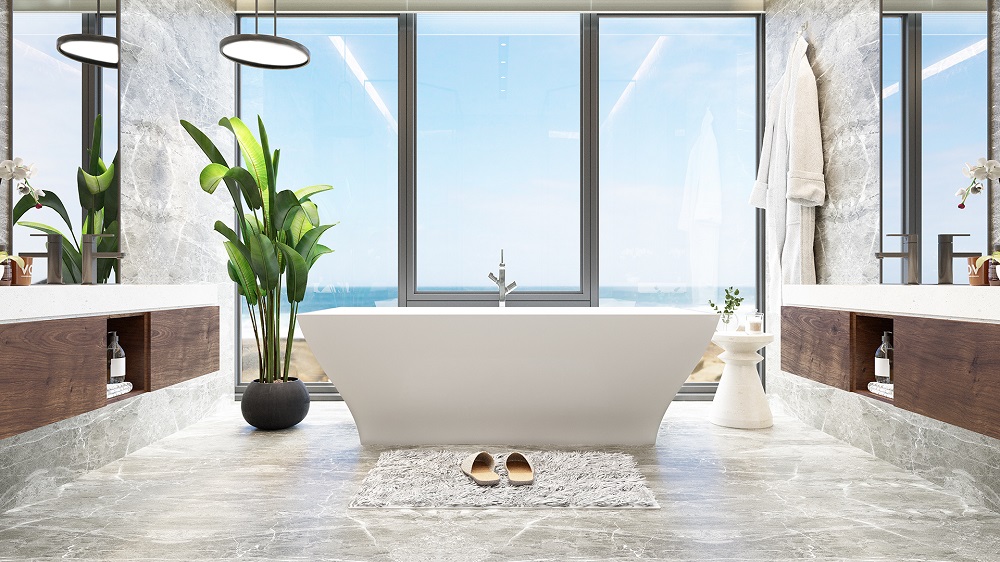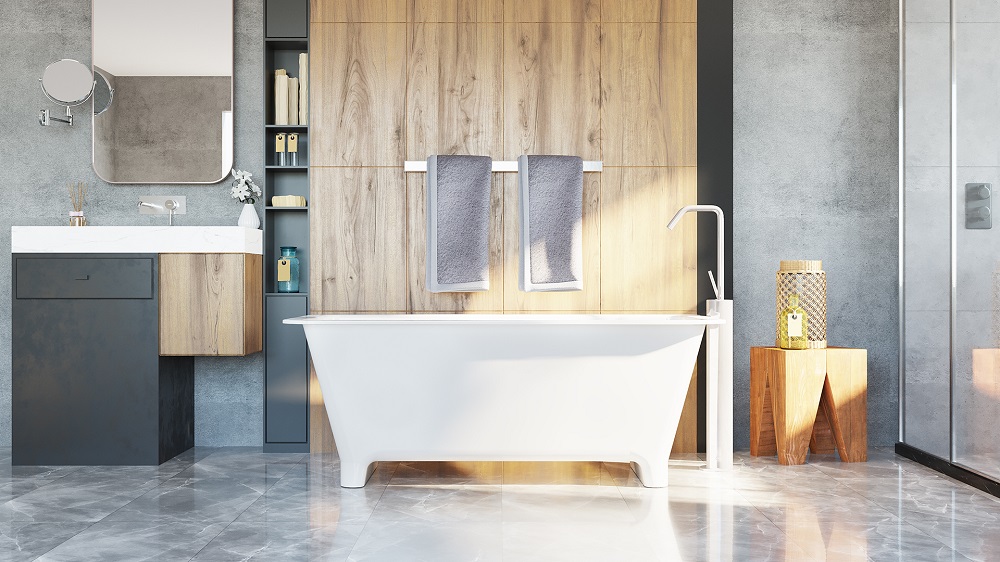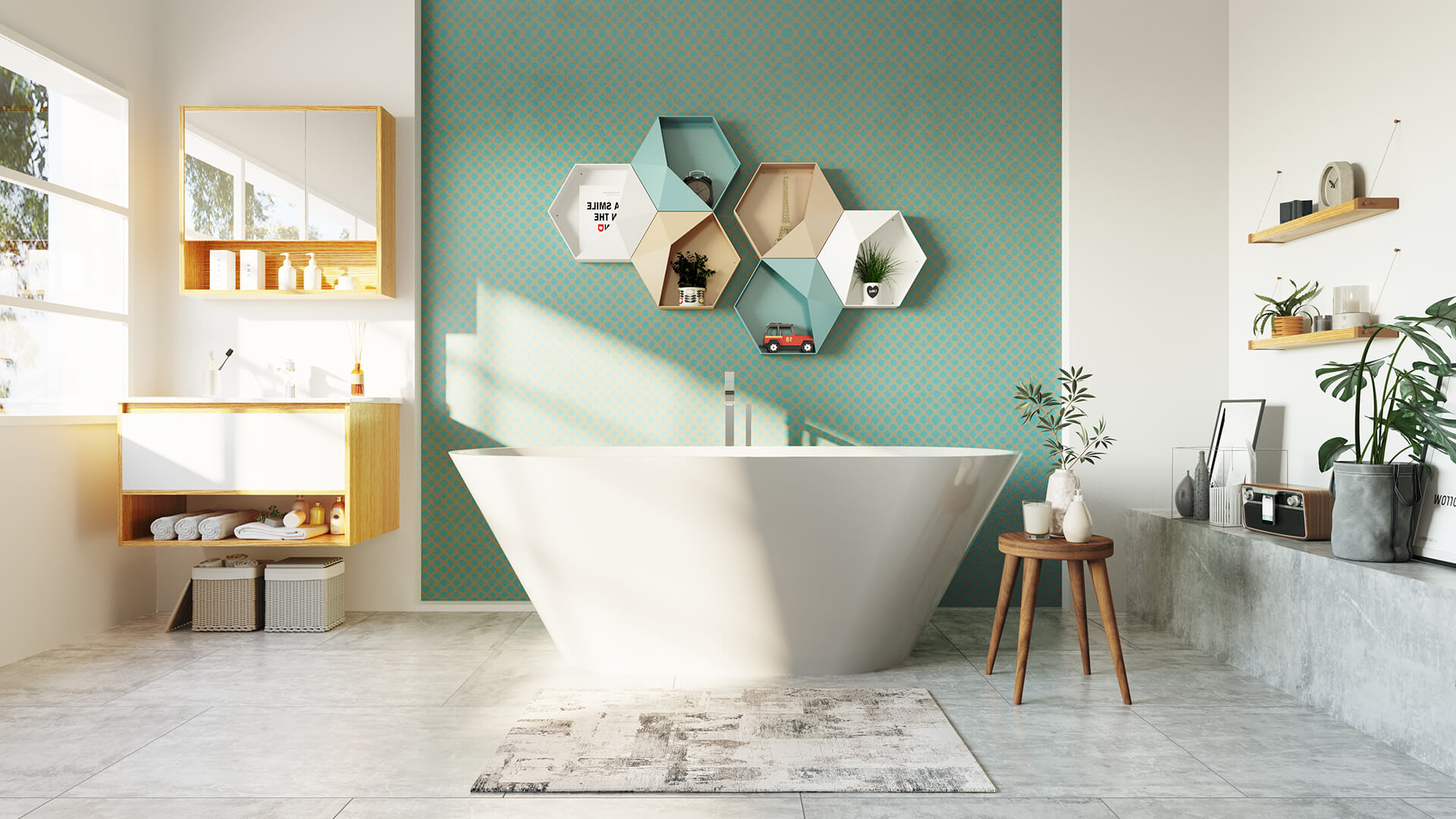
There’s something undeniably enchanting about a bathroom adorned with a freestanding bathtub.
For those new to the world of luxury bathroom fittings, a freestanding bathtub might sound like just another fancy term. In truth, it’s much more than that—it’s a blend of aesthetics, design, and timeless appeal.
The Essence of a Freestanding Bathtub: An Insight into Bathing Luxury
A freestanding bathtub is a standalone bathing beauty, finished meticulously on all sides.
Unlike traditional drop-in or undermount tubs that require the support of walls, these bathtubs take center stage, free from the confinement of boundaries. Whether it’s nestled against a wall or majestically positioned as the bathroom’s centerpiece, a freestanding bathtub always turns heads.
These bathtubs aren’t just versatile in placement; they boast an array of materials, shapes, sizes, and hues. And as with all aspects of design, their styles continue to flourish and evolve, making them a timeless choice for bathrooms across the globe.

What Are Freestanding Bathtubs Made Out of?
There are several options for the material of your freestanding bathtub, including cast iron, stainless steel, and copper, each with their own list of pros and cons. Here, we will highlight the two most popular material choices – acrylic and stone resin.
Acrylic: A popular choice, acrylic bathtubs are favored for their cost-effective nature. Without breaking the bank, they offer a decent lifespan of 10-15 years, making them a worthy investment for budget-conscious homeowners.
Stone Resin: T&L takes pride in sculpting bathtubs from premium stone resin. While a touch pricier than acrylic, the durability and elegance of our bathtubs are unparalleled, and they outlive acrylic tubs by a long shot with a lifespan of about 70 years. Our proprietary InspireStone® stone resin material is a harmonious combination of crushed limestone and polyester resin. This blend results in a bathtub that mimics the elegance of natural stone, without the hefty weight and hefty price tag. It is also stain-resistant, easy to maintain, non-porous, and ensures your bathwater retains its warmth for extended relaxation.

Are There Any Downsides to a Freestanding Bathtub?
Like all things luxurious, freestanding bathtubs come with their set of considerations. Here are some of the most common things to consider when deciding on a freestanding bathtub.
Price Tag: Their opulence often comes with a heftier cost compared to standard bathtubs. However, this can be considered offset by other factors, such as lifespan of the bathtub (in the case of stone resin tubs), and long-term home value.
Weight: Being crafted from premium materials, they are generally heavier than regular drop-in tubs. This will vary greatly depending on the material your tub is made out of – as some will require reinforced flooring. T & L Bathtubs lightweight, substantial material does not require reinforcing flooring.
Design Limitations: Certain styles might not have expansive rims, limiting the space for placing toiletries. However, they are also available in countless styles and designs to perfectly match your aesthetic.
Pet Baths: If you’re accustomed to giving your furry friends a splash or a bath at home, these bathtubs might not be the ideal choice.
Family Considerations: Depending on the bathtub’s height and design, they could be perfect for family settings, especially when bathing kids. However, it’s essential to select a design that aligns with your family’s needs.
In the world of bathroom luxury, freestanding bathtubs are more than just vessels to hold water; they are symbols of style, luxury, and comfort. Whether you’re looking to invest in one or simply curious about their allure, we hope this insight helps you navigate the world of freestanding tubs better.
After all, in the realm of relaxation, nothing quite compares to a sumptuous soak in a luxurious freestanding bathtub.
